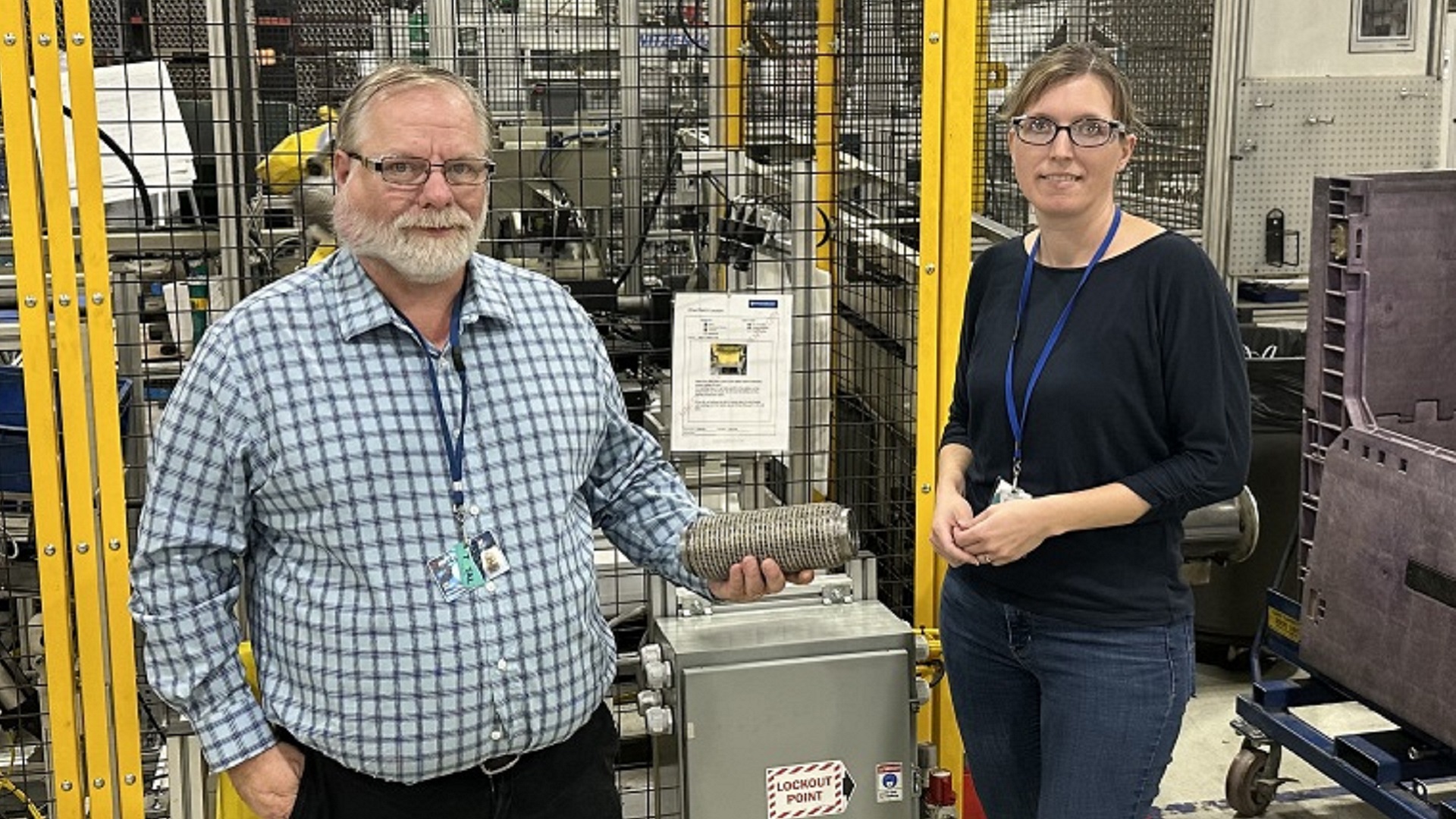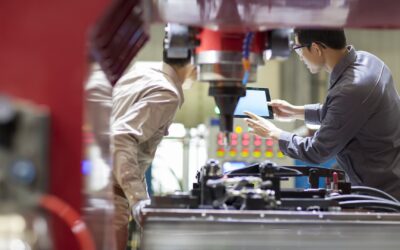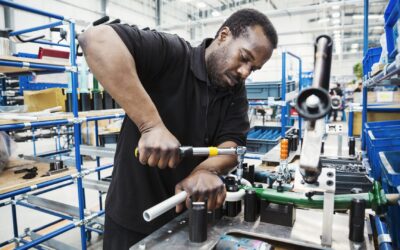Witzenmann USA is a producer of flexible metal hoses, expansion joints, metal bellows, pipe supports and automotive components. The Troy-based company is a subsidiary of the greater Witzenmann Group, headquartered in Pforzheim, Germany with roots dating back to 1854. Its specialty was and continues to be manufacturing flexible metal hoses, which the group patented in France and Germany in 1885.
Today, Witzenmann USA seeks to continuously evolve its manufacturing excellence, deploying innovative Industry 4.0 technologies to achieve its goals. In 2023, Witzenmann USA received an Industry 4.0 Technology Implementation Grant to deploy 3D vision systems to aid in quality control at its Michigan-based facility.
Leading the team at Witzenmann USA is director of operations Clifford Wright, a 25-year manufacturing industry veteran. Over his career, Wright worked in Lean manufacturing operations with Toyota, Magna and more.
“The thing I like most about Witzenmann USA is we are big enough to matter yet small enough to feel like family,” Wright said. “It is a size where we can interact with and provide for all of our workers nicely.”
Automation Alley sat down with Wright to discuss Witzenmann’s production, the implementation grant process, and the state of the manufacturing industry:
Witzenmann has a variety of operations but has specialized in flexible pipes for almost 140 years. What are some lesser-known aspects of flexible pipe manufacturing?
The key is everything starts out with flat, stainless steel. We roll pipe and then we make it into a flexible condition. We use plasma welding, laser welding, mig welding and everything in the process for different functions. But it all starts as rolled stainless steel — coming out in over 100 different designs. Our products are in everything from automotive applications, oil rigs and MRI machines. We make anything that moves energy in a flexible manner.
You were awarded an MEDC Industry 4.0 Implementation Grant. What was your reason for applying?
We were trying to get automation off the ground since a lot of our processes are labor intensive. We had some quality issues, and wanted to improve on that. When the grant came up, it was a no-brainer to apply and try to see what the MEDC thought of our next step.
So, we bought a robot with six cameras with help from the grant. It was not only about quality, but about manpower, productivity and cost-savings. The robot picks the part up and does about 12 inspection checks, including checking inner and outer diameters, if all the parts are there and more.
The hard part is our cycle time is 14 seconds so we had to break it up into six cameras to make it in that cycle time for inspection.
After receiving the award, how did it make a difference for your business?
We were able to implement it earlier this year. We’ve had zero claims from the customer since we’ve been doing these inspections. We are also a lot more consistent in our productivity. Of course, we are also working out some bugs as always. But it’s definitely helped improve catching defects in our products.
You’ve spent 25 years in manufacturing. What were the industry concerns 25 years ago? How has that changed today?
Two things come to mind. One is 25 years ago, the hardest thing was finding good workers. Today, the hardest thing is still finding good workers. In that respect, it’s the same.
On the other hand, things right now have timelines much much faster. If a large automotive OEM called 25 years ago, they would tell us “Hey, we have a launch in two years.” And we would work on it for two years, launch it and ramp it up at a steady rate for seven or eight years.
Now, they want to revamp cars every few years and you’re lucky to get six or eight months notice. Then they want it up to full speed six weeks after launch. This is the automotive world and other customers are following suit. Everything is much faster, and that’s why new technology and data is so important — You have to move faster to capture everything.
What new technology are you most excited about in manufacturing, or see the most promise in your operations?
I see 3D printing as exciting. We want to get more into metal 3D printing for prototyping. The other thing is artificial intelligence (AI). We see it just now coming into manufacturing.
When I mention manpower as always being an issue, one of the hardest things we deal with is training new people. We always miss stuff or forget things in training. Quite honestly, the people today don’t train well with just one person talking to them and showing them what to do. If we were more digitally active with AI in training, I think we would have better retention and we wouldn’t miss any training. I think AI will lead the way in the future with training.
What would you tell a fellow manufacturer about applying for the grant and the process that follows?
We had a roundtable meeting at Witzenmann a few months back with other manufacturers. A few people asked if they would qualify. I told them to do as Nike does: “Just Do It.” If you are a small manufacturer, fill it out, do it and work it out as you go. If nothing else, the assessment the MEDC does is valuable. They told us some things we already knew, but seeing it from an outside group validates what you’re looking at.
You might not even know what you want to do in Industry 4.0, but the assessment can help with that. I would advise all small manufacturers to just fill it out and figure it out. Whether it was MEDC, MMTC, MGA or Automation Alley, you all helped me figure things out that needed more detail and helped us along the way.
To learn more about the MEDC Industry 4.0 Technology Implementation Grant, click here.
Sign up today for a free Essential Membership to Automation Alley to keep your finger on the pulse of digital transformation in Michigan and beyond.
Dennis Burck is Automation Alley's Digital Content Editor, responsible for the organization's content strategy and development. Dennis is a media-savvy professional who builds relationships with Automation Alley members and partners to find and create the best and most relevant content to increase Industry 4.0 awareness and drive traffic to Automation Alley's Industry 4.0 knowledge center.




